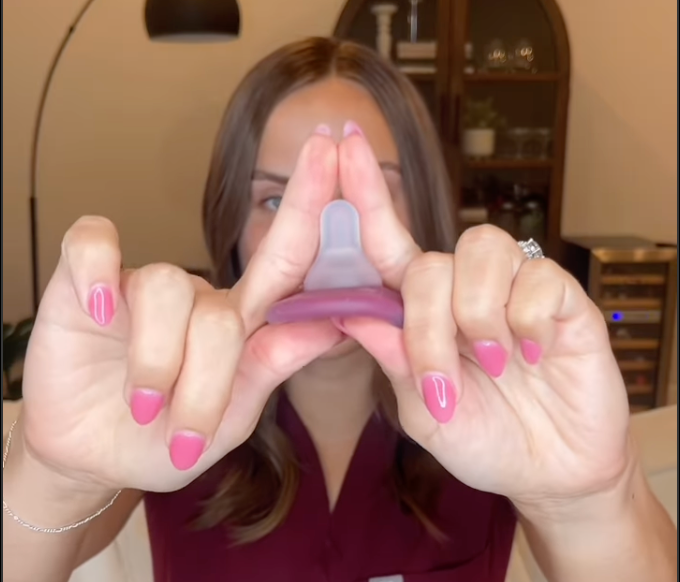introduction
As a speech-language pathologist and certified lactation counselor, Joanne Kang Rogers has faced many pediatric feeding challenges. However, the case closest to her heart was her own daughter Katharine’s overcoming ankyloglossia, commonly known as tongue tie. This article delves into their journey, highlighting personal challenges and professional strategies.
our early struggles with tongue tie
From her birth, I noticed Katharine's heart-shaped tongue indent, a classic sign of anterior tongue tie. Even with my professional background observing babies with trouble feeding, it was heart-wrenching to see her struggle with breastfeeding. She frequently lost suction, which made breastfeeding painful and ineffective. The clicking sounds during feeding, her shallow latch, and constant slipping were clear indicators of her tongue tie, discomfort and the inefficiencies in her feeding.
turning point with laser frenectomy
When Katharine was just one week old, she underwent a laser frenectomy. (Her older brother, also born with a tongue tie, had a traditional scalpel frenectomy in the hospital just after birth.) This procedure, performed by a pediatric dentist, resulted in a complete release of her restriction. I noticed right away that it significantly enhanced her tongue mobility, improving her breathing and tongue positioning during sleep. Utilizing recommended post-frenectomy mouth exercises, Katharine quickly became an great eater with a deep latch and strong suck.
overcoming setbacks
A severe infection forced me to stop breastfeeding temporarily and rely exclusively on bottle feeding. My mom came to help me care for Katharine, so I brought out the conventional bottles that she had used when she helped with my son. While Katharine accepted that bottle without trouble, even the slowest flow nipple caused her to swallow too much air, leading to gassiness and discomfort.
Exclusively bottle-feeding for even that short time, I saw Katherine losing skills and some of the progress that she initially made post-frenectomy. Even though the nipple we were using is one I typically recommend in my clinical practice to breastfeeding mothers (because it attempts to replicate how a baby’s jaw looks during breastfeeding), it couldn’t replicate how a breast functions because it didn’t require active sucking for Katherine to express milk from it.
My son had become a “breast refuser” after adapting to the easy flow of a conventional bottle, so our breastfeeding relationship was cut short and I became an exclusive pumper. With Katharine, I wanted things to be different.
I could tell that she was adjusting to the passive flow of that bottle, and knew I needed to make a change if I wanted her to return to the breast. Determined to continue breastfeeding, I introduced the mōmi bottle.
why mōmi?
I had become interested in the bottle because of the unique design of the nipple. It differed from the conventional nipple I had been using, which had allowed her to passively express milk by merely biting down. mōmi facilitated an effective suck reflex from the start, and rewarded Katharine’s strong sucks with immediate positive reinforcement (milk!).
the role of active feeding
The introduction of the mōmi bottle was crucial. While at first she tired easily, over a couple of days I consistently offered the bottle and watched her become more efficient at every feed. The compression-based nipple encouraged Katharine to feed actively, using both suction and compression, which is essential for proper oral development. This active engagement helped alleviate her gassiness and transformed her feeding technique from a simple piston-like jaw motion (“chomping” on a conventional bottle nipple) to the more complex rocking motion of healthy nursing. I was so relieved: using the bottle was enhancing her breastfeeding skills.
personal reflections and breastfeeding goals
This journey was more than a series of challenges; it was a profound learning experience that reinforced my passion for my field. The difficulties I faced with Katharine’s feeding not only taught me about resilience and persistence but also about the critical impact of using the right tools, like the mōmi bottle, which I now enthusiastically recommend to other families in similar situations.
As I prepare to return to my clinical practice, I am optimistic about continuing to breastfeed Katharine because of mōmi. I look forward to using what I’ve learned to assist other families.
conclusion
For parents navigating infant feeding challenges, remember that you are not alone. The innovative mōmi nipple can be a tool to support your feeding goals, alongside consultations with lactation and feeding experts. Don’t be afraid to ask for help! Embrace your journey, trust your instincts, and lean on resources that align with your breastfeeding goals.
faq
What is ankyloglossia?
Ankyloglossia, or tongue tie, is a condition present at birth that restricts the tongue's range of motion. Typically, a short, tight band of tissue tethers the bottom of the tongue's tip to the floor of the mouth, which can interfere with breastfeeding.
How does a frenectomy help with tongue tie?
A frenectomy is a surgical procedure that releases the tight band of tissue under the tongue. This procedure is often performed with a laser and can significantly improve feeding and breathing patterns in infants with tongue tie.
Why choose the mōmi bottle?
The mōmi bottle is designed to mimic breastfeeding, promoting active suckling and proper oral development. It is particularly beneficial for babies who are or will be breastfed, and, when used in consultation with a lactation professional or infant feeding specialist, can be used to teach baby the skills they need to effectively breastfeed.
Can tongue tie affect a child’s development?
Yes, untreated tongue tie can have lifelong impacts on feeding, dental development, breathing and sleep. Addressing the condition early through procedures like a frenectomy can mitigate these issues and support optimal growth and development.



